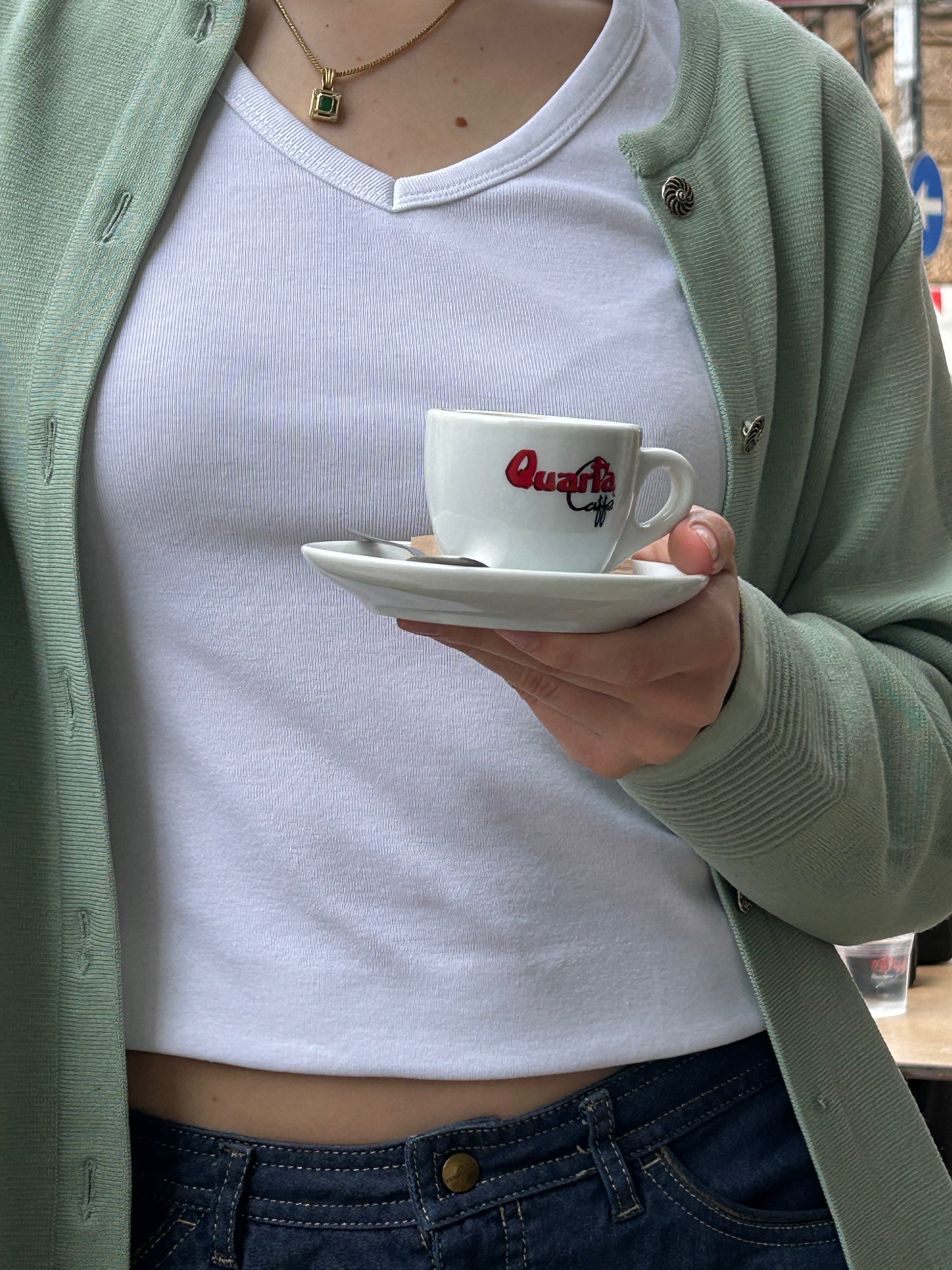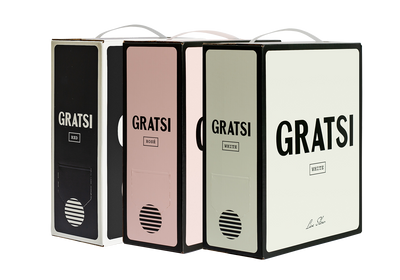Puglia’s Culinary Gems
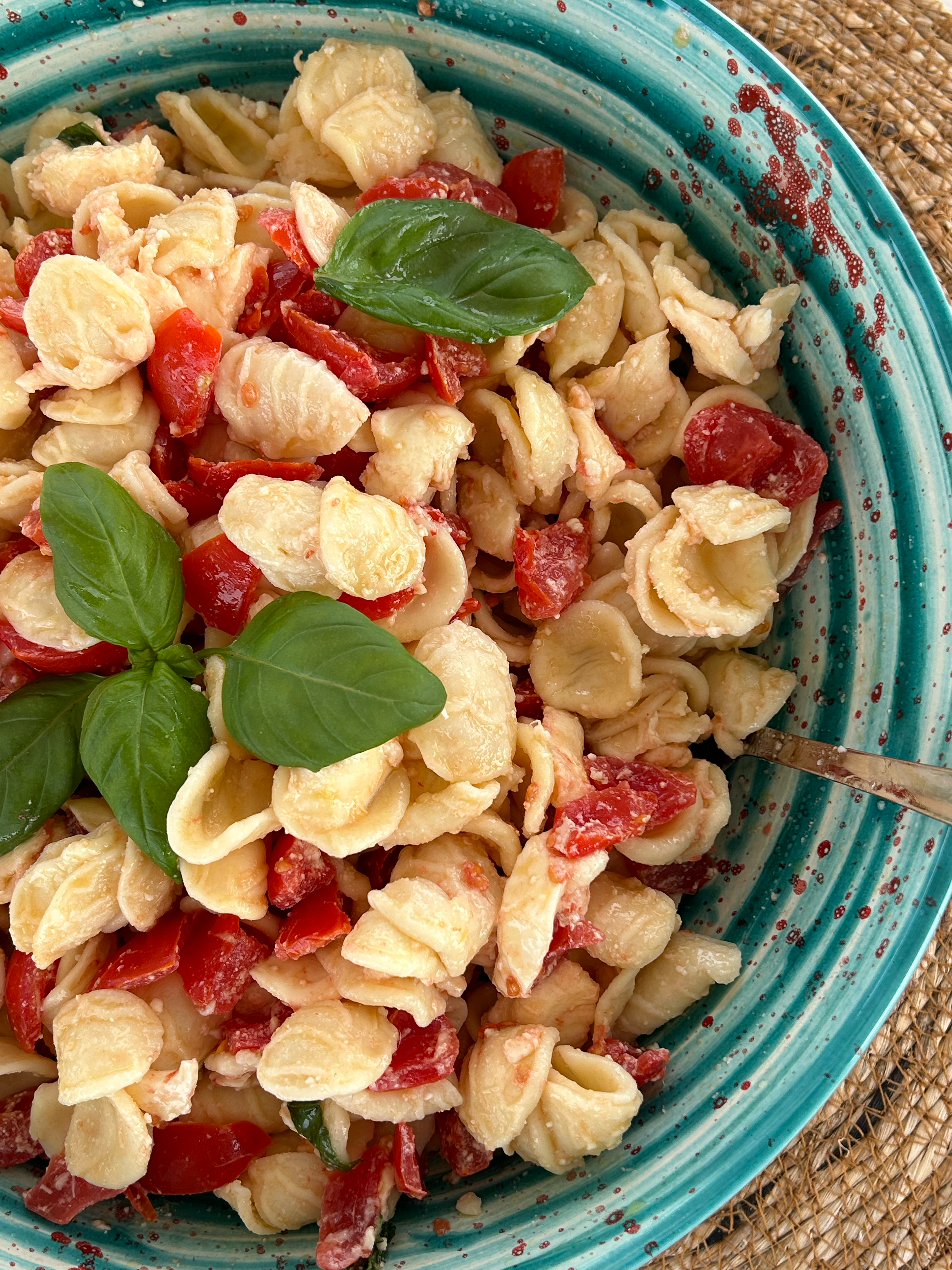
How the Pugliesi create world-class cuisine.
Puglia’s Culinary Gems
By Antonia Fest
July 15, 2024
How the Puglians use their olive oil, burrata and everything in between to create world-class cuisine.

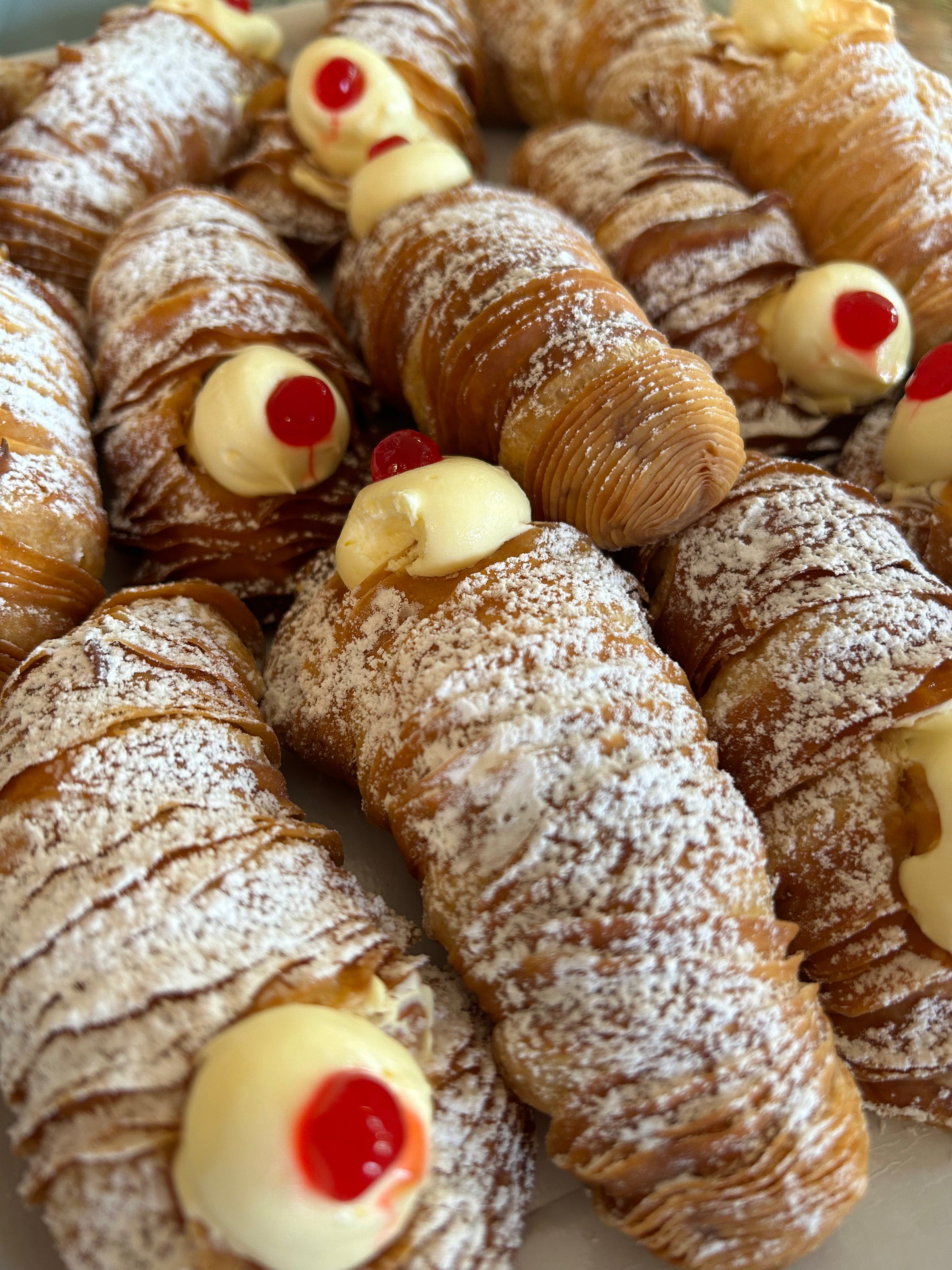
We landed in Puglia as the sun was setting over Bari Airport. A long car rental queue, a wrong turn on the motorway, an exhausted roadtrip playlist later, and we arrived at our homebase for the next 3 nights. By the time we rolled into the driveway of Masseria Donnagnora on the outskirts of Ostuni, it was nearing midnight, and the last morsels which had touched our lips were soggy London airport sandwiches. We were craving something real. Luckily, we weren’t disappointed— our tour of the villa ended in a red-tiled kitchen with multiple covered dishes lying on the table.
Emilio, the villa’s caretaker, grasped a large tray shrouded in wrapping paper and began tearing into it to reveal a mountain of focaccia gleaming with an olive oil sheen. He then uncovered a container packed with ballooning burrata; you knew that with the slightest amount of pressure applied, their creamy insides would burst out.


The treasures kept coming; a dazzling selection of cured meats, ruby red tomatoes, ring shaped taralli biscuits laced with fennel seeds, a steaming platter of freshly baked parmigiana gilded in a crispy layer of mozzarella. Our midnight feast was washed down witha robust local wine and that night, our stomachs duly filled, we crawled into our beds with the unequivocal sense of being in a region of culinary riches.




In essence, our first dinner in Puglia was a simple affair—just bread, meat and cheese so why did it feel like a banquet fit for a king? Some of the region’s most basic dishes are known the world over as luxury exports used in any number of fine dining establishments. The southernmost province on mainland Italy might have become one of the most elegant and sought after destinations in the country but its underbelly is still rustic and gritty. The Pugliesi know that complexity does not result in sophistication, and that exaggeration does not always yield success. They celebrate the authenticity of simplicity, and this can be tasted in every bite.

Take burrata. We spent a week in Puglia and must have enjoyed the sumptuous cheese in every Masseria which we visited, at every restaurant which we dined at. We had it served to us as we glided down the coast of Polignano a Mare in a simple catamaran. It was offered to us on a silver platter by the owner of a recently restored 18th century palazzo. We savoured it at a countryside vineyard, and we sampled it at an easy trattoria in Alberobello. It is one of the region’s most famous foods and tends to come with a hefty price tag at your own local Italian.
Abroad, it is usually dressed up with some sort of grilled, confit, charred, smoked or oven-roasted vegetable and arrives lying on a bed of rocket, drizzled with pesto or chilli oil or balsamic glaze adorned with prosciutto or crispy pancetta or even anchovies. But not in Puglia.
At the source, your burrata will come served as is—there is no need to elevate it because the raw ingredient is so delectable on its own. It is served best accompanied with some crunchy bread and a drizzle of local olive oil. The dish is simple but that is not to say that the method of preparing it is. It requires time, precision, attention and care which are running themes in most of Puglia’s greatest creations.


Over the next days, we continued exploring the Puglian countryside and coast through the hospitality of its locals. We drove from the north to the south where the landscape changed dramatically especially in the status of the olive groves. The region was once known to manufacture almost half of Italy’s olive oil production but in recent years, it was subject to Xylella fastidiosa, an apocalyptic disease which killed a third of its 60 million olive trees. The northern Valle d’Itria region suffered the most and fields of barren trees jut out of the soil, aharsh reminder that businesses and livelihoods were severely impacted by the ravaging of this region’s vital crop.
But the Puglians don’t give up so easily and bold action has been taken to regenerate the lifeblood of the south. Scientists have been developing hybrid varieties of the tree which are resistant to the disease and which they graft into those that are damaged. This is done in the hope of reviving the graveyards of 20 million olive trees that define the culture, the business, the history and the cuisine of Puglia. It is also testament to the locals’ resilience and passion to maintain their culinary legacies which date back to antiquity. It takes just one taste of their liquid gold to understand why.
Needless to say, wherever we roamed, the multitude of dishes offered to us were usually amalgamated with the purest extra virgin olive oil from the surrounding lands. Fruity, intense, aromatic and rich,it is as important to the dish as the main event and is yet another example that quality lies in simplicity.

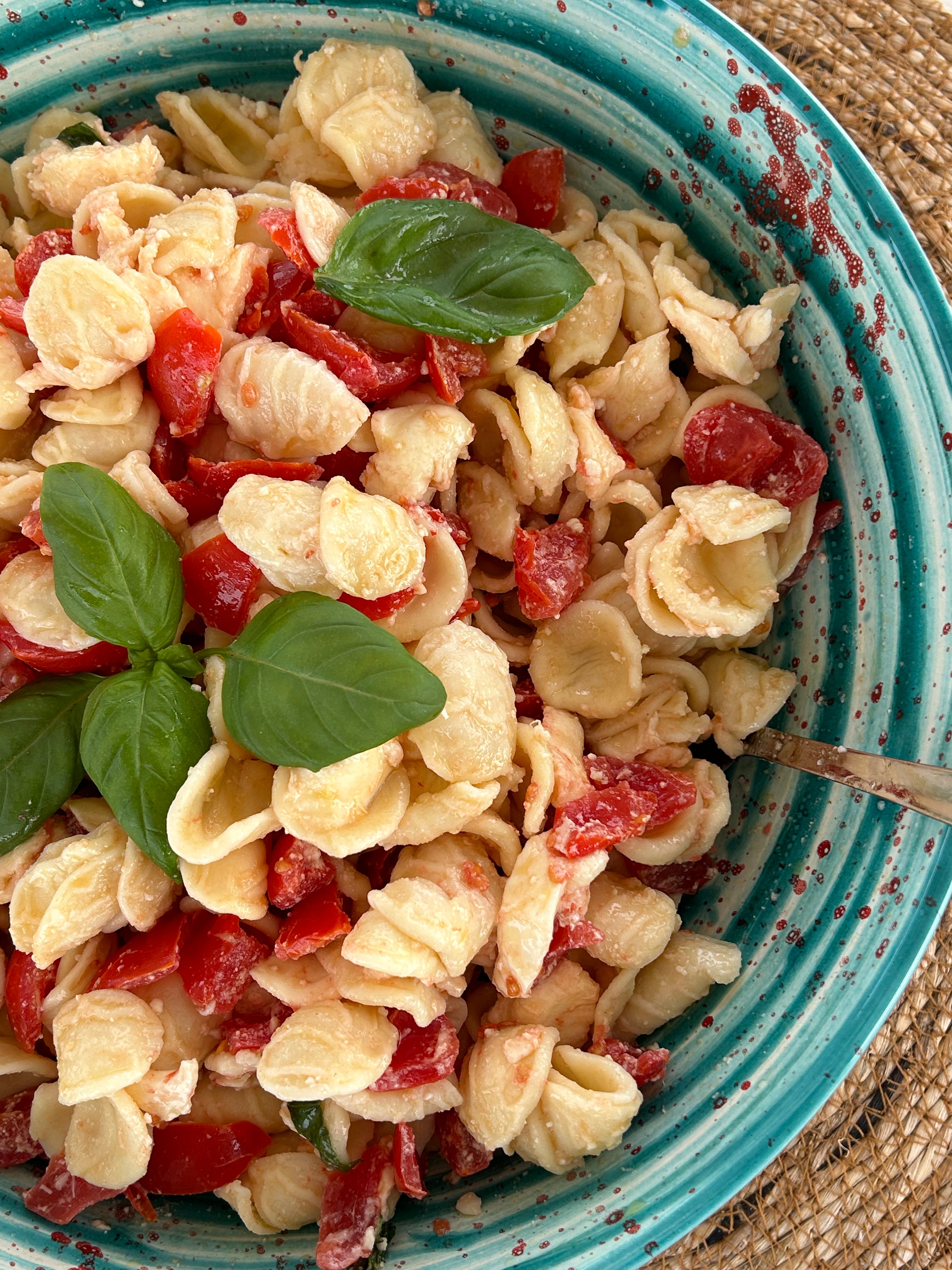
The more we drove, the more we ate. Handmade orrechiette pasta with sun-blushed tomatoes and shreds of basil, deep fried golden zucchini flowers with molten cheese at the heart, freshly caught cod lightly grilled and sprayed with freshly picked lemons and freshly harvested olive oil, spaghetti all’assasina (Assassin’s spaghetti) where the pasta is cooked in a spicy tomato sauce, a platter of cherries sitting on a bed of ice to keep them crisp, bite sized balls of mozzarella swimming in a creamy liquid, and aromatic almond tarts to finish in sweetness. These dishes are simple, sometimes not requiring more than two or three ingredients and yet, they are decadent, rich, hearty, and bold. This is the secret of the Puglian cuisine.
In a country which boasts 800km of coastline and nearly 20,000km² of land, the variety of produce is complimented by local understanding of how to hone it and use it. Some of these riches have been around for thousands of years; many of the olive trees in Puglia date back to ancient empires whilst others a newly consolidated treasures; burrata was only first invented in the 20th century. But it is not everywhere that you find such a deep respect for culinary traditions like in Puglia. It shuns the convoluted ways and welcomes the toil required to create, to protect, to revive and to conserve the food which is respected far and wide.
